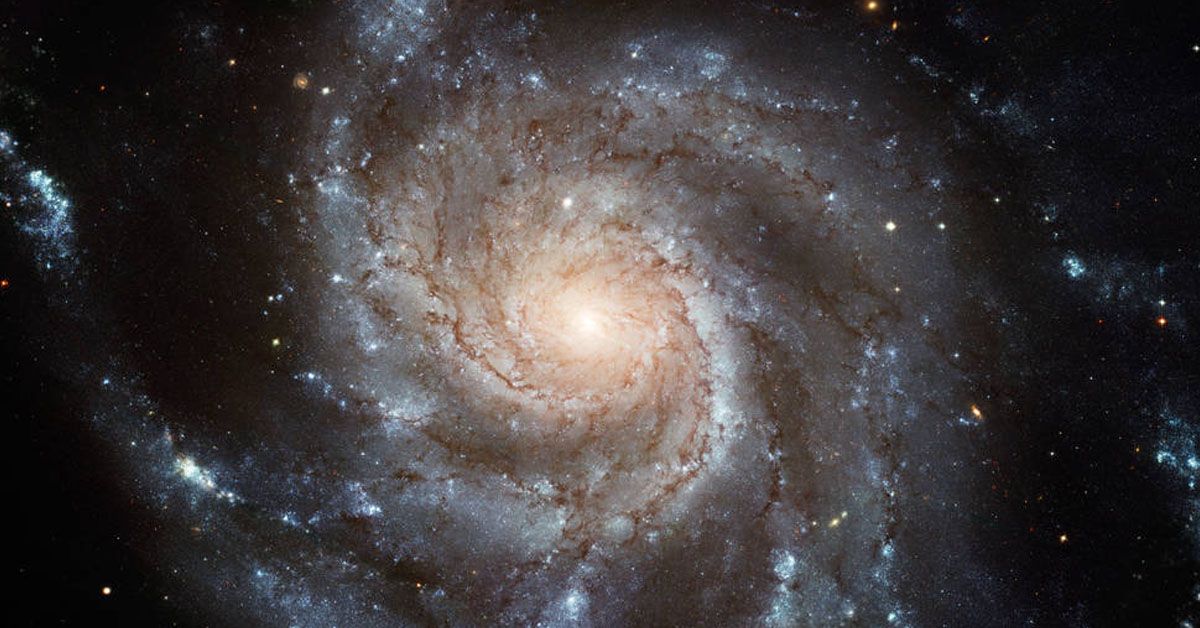Focusing on a recently discovered supernova in the Pinwheel Galaxy, termed SN 2023ixf, the researchers are setting their sights on understanding this extraordinary celestial event and identifying potential signals that might be broadcast from advanced alien civilizations.
The underlying hypothesis of the study is intriguing: if an advanced civilization resides in the vicinity of this supernova, could they utilize the brightness and proximity of the event to get our attention?
After all, the burst of a supernova is one of the most luminous events in the universe. In this regard, astronomers are employing the "SETI Ellipsoid," a concept that encapsulates an egg-shaped region of space surrounding the supernova, to streamline the search for potential signals.
Signal Synchronization as a Strategy for Interstellar Communication
Imagine, if you will, an alien civilization possessing advanced technology and knowledge that surpasses our own. How might they communicate with other intelligent beings across the vast expanse of space?
One theory proposes that these civilizations might use significant cosmic events, like supernovae, as a beacon to get our attention. Supernovae are extraordinarily bright, stellar explosions that can be seen across vast distances.
https://t.co/9aFARzYdjr @newscientist
— The SETI Institute (@SETIInstitute) June 12, 2023
If any alien civilisations have spotted the new supernova SN 2023ixf in the Pinwheel galaxy, they may use it to try to make contact. pic.twitter.com/HgWeCCUJtD
If an alien civilization were located near such an event, they might use this increased visibility as an opportunity to send a signal. The coordination of sending such a signal concurrent with the observation of a supernova is known as signal synchronization.
This strategy hinges on the presumption that any intelligent life form exploring the cosmos would pay special attention to a supernova, making it a suitable time for sending and receiving signals.
The "SETI Ellipsoid" Synchronization Technique
The research team employs a concept called the "SETI Ellipsoid" to assist their search efforts. This term denotes a region in space surrounding a supernova, which takes on an elongated shape resembling an egg.
It is within this region that a potential signal emitted by extraterrestrial life may originate. The utilization of the SETI Ellipsoid model presents a significant advantage by substantially narrowing down the search area. Consequently, the quest for potential signals becomes more efficient and manageable.
The shape and size of the ellipsoid depend on two key factors: the location of the supernova and the period during which the light emitted by the supernova is observable to observers.

The latter factor is of utmost importance since any signal attempting to synchronize with the supernova must be transmitted while the supernova's light remains visible to the intended recipients, namely us on Earth.
The task of predicting potential signal transmissions is greatly facilitated by utilizing Gaia EDR3 parallaxes. These measurements furnish detailed information regarding the distance between stars and Earth.
By combining this data with knowledge about the supernova and the SETI Ellipsoid, the research team can generate more precise forecasts regarding the timing and location at which a signal might be detected.
In this particular realm of research, precision holds paramount importance. A more accurate prediction enables a more efficient allocation of resources and heightens the likelihood of detecting a signal, should it indeed exist.
Potential for Real-Time Searches for Coordinated Technosignature Signals
The proximity of supernova SN 2023ixf presents an exciting opportunity: the potential for real-time searches for coordinated technosignature signals.
Technosignatures are signs of technology that might be indicative of an advanced alien civilization. They might manifest as specific patterns or frequencies in radio signals that wouldn't naturally occur, making them stand out to our detectors.
Given the relative closeness of the supernova (in astronomical terms), we could potentially pick up these technosignatures almost as soon as they are emitted.
In other words, we might be able to detect and analyze these signals in real time, dramatically increasing the likelihood of identifying any potential extraterrestrial communication efforts.

Within the framework of this research, the Gaia 100 parsec (pc) star sample serves as a critical dataset. Gaia is a mission by the European Space Agency aimed at charting a three-dimensional map of our Galaxy.
It precisely measures the positions, distances, and motions of stars within a radius of 100 parsecs from the sun.
The relevance of this star sample to the research lies in its potential to include targets that fall within or near the SETI Ellipsoid of SN 2023ixf.
By cross-referencing the locations of these stars with the boundaries of the SETI Ellipsoid, the team can effectively narrow down their search and focus their efforts on the most promising targets.
In the context of this study, real-time monitoring entails observing the SETI Ellipsoid and the associated targets within the Gaia 100 pc star sample continuously. This active surveillance is crucial for several reasons.
First, it increases the chances of identifying any transient technosignatures that might only appear for a brief period.
Second, it allows the team to immediately follow up on any potential signals, reducing the risk of losing valuable information.
The continuous growth of the Ellipsoid size is another critical factor in the research. As the light from the supernova continues to travel through space, the region where both we and potential extraterrestrial observers could see the light, the SETI Ellipsoid also expands.
This expansion means that new stars from the Gaia 100 pc sample could enter the Ellipsoid, presenting fresh potential targets for our search.
By constantly monitoring the growth of the Ellipsoid and adjusting the search parameters accordingly, the research team ensures that no potential source of technosignatures is overlooked.
The Use of the Allen Telescope Array (ATA) and the Green Bank Telescope
The Allen Telescope Array (ATA) and the Green Bank Telescope stand as the two critical instruments aiding this research. The ATA, located in California, is a large array of small dishes that can simultaneously scan different parts of the sky, perfect for monitoring a multitude of targets within the SETI Ellipsoid.
On the other hand, the Robert C. Byrd Green Bank Telescope, situated in West Virginia, is the world's largest fully steerable radio telescope. Its size and sensitivity make it an excellent tool for observing specific targets in great detail.

In this quest for potential technosignatures, the data collected from these telescopes will be processed using a tool known as turboSETI.
TurboSETI is a software developed for the search of extraterrestrial intelligence (SETI) that is capable of combing through vast datasets and identifying any unusual signals that might indicate the presence of an advanced civilization.
The Evolution of the Project
During the global COVID-19 pandemic, James R. A. Davenport, a researcher affiliated with the University of Washington and recognized for his contributions to the field of low-mass stars, found himself with ample idle time.
Seizing the opportunity, he embarked on an uncharted path by delving into the concept of utilizing supernovae as celestial guides in the search for intelligent extraterrestrial life.

The team comprised astronomers from esteemed institutions including the University of Washington, the SETI Institute, Yale University, and Smith College, each offering distinct viewpoints to enrich the project's outcomes.
The initiative has evolved from a mere contemplation into a comprehensive investigation, harnessing cutting-edge telescopes and advanced software to potentially unravel the enigmatic secrets of the cosmos.
Irrespective of the eventual findings, the expedition itself is a testament to humankind's remarkable ingenuity and our unyielding quest to comprehend the vast universe we inhabit.
As Supernova SN 2023ixf reverberates through the universe, it remains uncertain what new discoveries may await us on our doorstep.
Sources: arxiv.org













